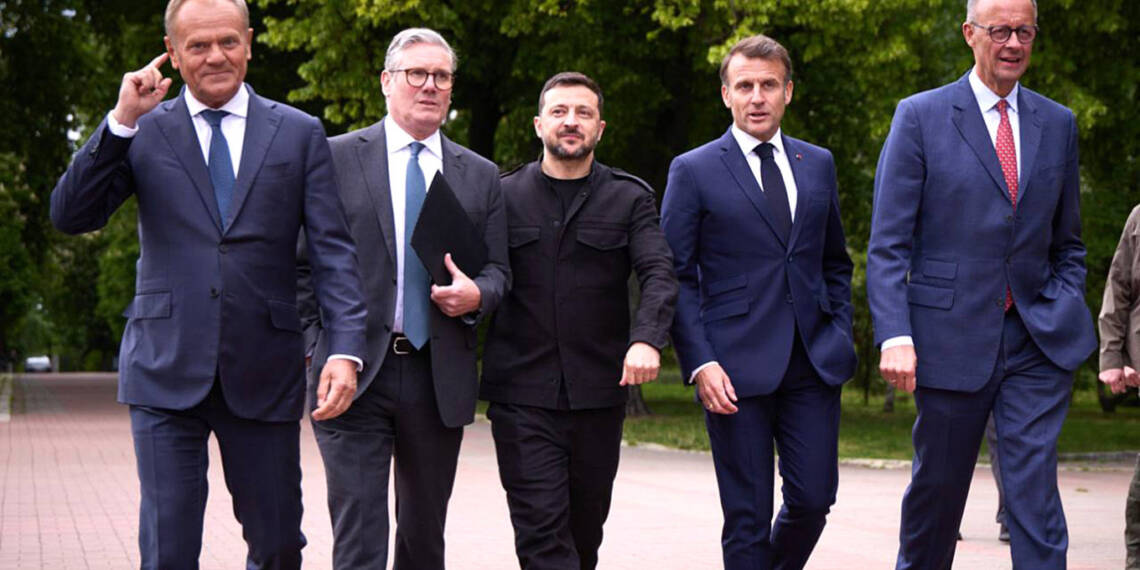In a landmark shift in European defense policy, NATO has requested that Germany contribute an additional 40,000 troops as part of its effort to strengthen the alliance’s eastern defenses against Russia. This is a very overt move and is bound to be seen as a major transgression by Russia. Germany is already providing the dangerous Taurus missiles to Ukraine and now troop deployment is a major escalatory step.
Germany Deploys Troops
Germany plans to contribute seven more brigades—roughly 40,000 troops—as NATO pushes to increase its brigade count from 80 to over 120. This expansion includes:
Deployment of the 45th Panzer Brigade (4,800 troops) permanently to Lithuania—Germany’s first such foreign deployment since WWII.
Commitments to provide 35,000 deployable troops and 200 aircraft by 2025. Mobilization of rapid-response forces under NATO’s goal to have 300,000 troops ready for near-immediate deployment in crisis zones.
Germany is backing these moves with increased defense funding, including a €100 billion modernization program to upgrade the Bundeswehr’s capabilities.
Impact on Germany and NATO
This is a fundamental policy shift for Germany, which has traditionally maintained a cautious military posture. Its increased role:
Solidifies its leadership in NATO, enhances deterrence in Eastern Europe, particularly in frontline states like Poland and the Baltic nations.
It also sets a precedent for other European nations to increase military contributions. However, logistical and personnel challenges remain: Germany still falls short of its target of 203,000 active personnel and faces recruitment shortfalls.
Escalation of Tensions in Europe
While NATO sees these moves as defensive, Russia views them as provocative. The permanent deployment of NATO troops in countries bordering Russia, especially Lithuania, fuels longstanding fears in Moscow of encirclement. This could escalate tensions in several ways.
Russia is likely to respond by reinforcing its Western Military District, deploying additional missile systems (e.g., Iskander), and conducting more frequent large-scale military drills near NATO borders.
Moscow may also look to intensify cyberattacks, political interference, and propaganda campaigns targeting NATO member states, portraying the deployments as proof of Western hostility.
These moves by NATO are bound to destabilize nations like Moldova, Georgia, and even non-NATO EU members such as Austria or Finland (recently joined NATO) they could become new flashpoints for indirect Russian retaliation. As this move further erodes prospects for diplomatic dialogue, pushing Europe closer to a long-term Cold War-style standoff.
This escalation risks drawing Europe into a new era of militarized competition, marked by entrenched mistrust and the constant risk of miscalculation, especially in border regions like the Suwałki Gap.
US and Russian Reaction
The Kremlin has condemned NATO’s expansion and Germany’s role in it, warning that such deployments destabilize the continent and threaten Russian national security. Though Russia claims it has no intention to expand the Ukraine war into NATO territory, it maintains the right to “respond proportionally.”
Expect increased surveillance, military buildup in Kaliningrad, and diplomatic retaliation such as reducing cooperation in existing international forums.
The U.S. has publicly supported Germany’s increased commitment, seeing it as a long-awaited rebalancing of burden-sharing within NATO. However:
American officials remain cautious, especially with political shifts in the U.S. potentially impacting future transatlantic security cooperation.
Any signs of U.S. military drawdown in Europe (if a future administration favor isolationism) could complicate Germany’s role and leave NATO more vulnerable.
Germany’s decision to provide 40,000 additional troops is a historic pivot in its military policy and a powerful signal of NATO unity. Yet, this reinforcement also adds fuel to an already volatile geopolitical landscape, risking a broader East-West standoff that may define European security for years to come.
The key question moving forward is not whether NATO can deter Russia—but whether Europe can avoid sliding into a new, protracted confrontation with no clear exit.








